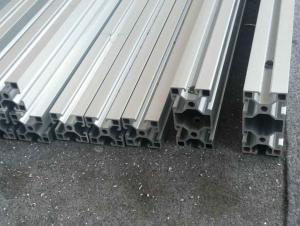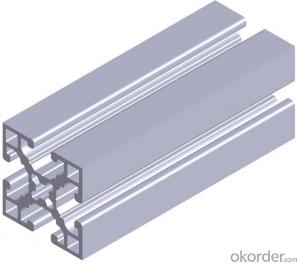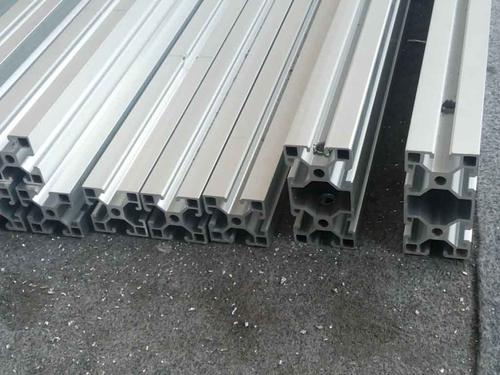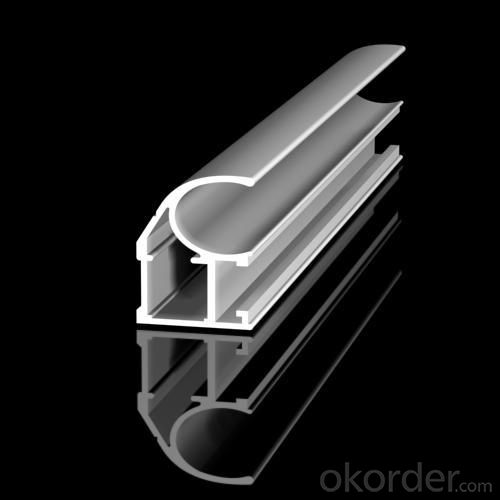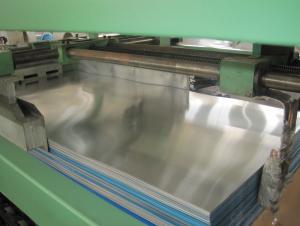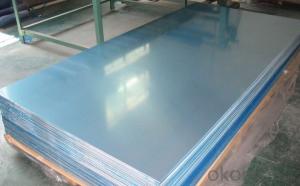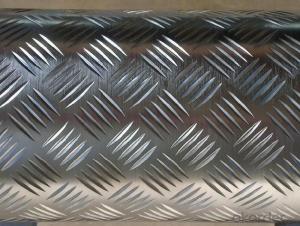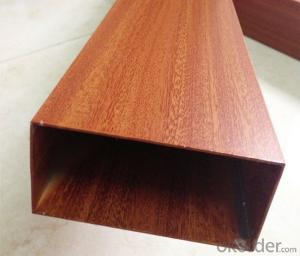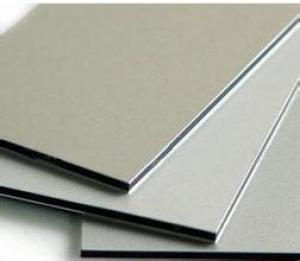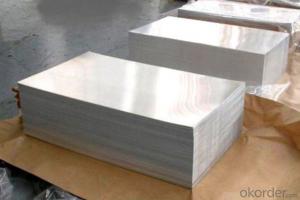Tlc Aluminum Sheets Si60 F254 for Aluminium Tile Trim Profile Windows and Doors Construction Usage
- Loading Port:
- Shanghai
- Payment Terms:
- TT OR LC
- Min Order Qty:
- 20 m.t.
- Supply Capability:
- 2000 m.t./month
OKorder Service Pledge
OKorder Financial Service
You Might Also Like
1.Structure of Aluminium Tile Trim Profile windows and Doors Construction Usage Description:
Aluminium Tile Trim Profile windows and Doors Construction Usage (also spelled anodising, particularly in the UK and Australia) is an electrolytic passivation process used to increase the thickness of the natural oxide layer on the surface of metal parts. Anodized aluminium surfaces, for example, are harder than aluminium but have low to moderate wear resistance that can be improved with increasing thickness or by applying suitable sealing substances.
2.Main Features of the Aluminium Tile Trim Profile windows and Doors Construction Usage:
High corrosion-resistance;
weather-resistance;
heat-resistance;
alkali-resistance and impact-resistance properties.
3.Aluminium Tile Trim Profile windows and Doors Construction Usage Images:
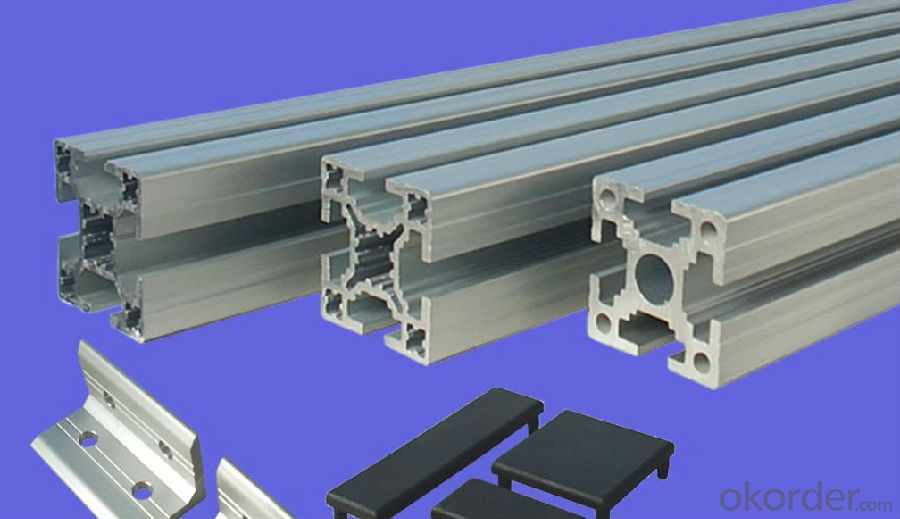
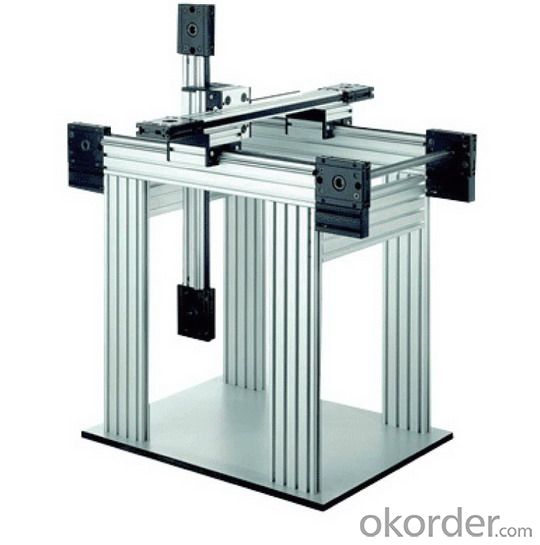
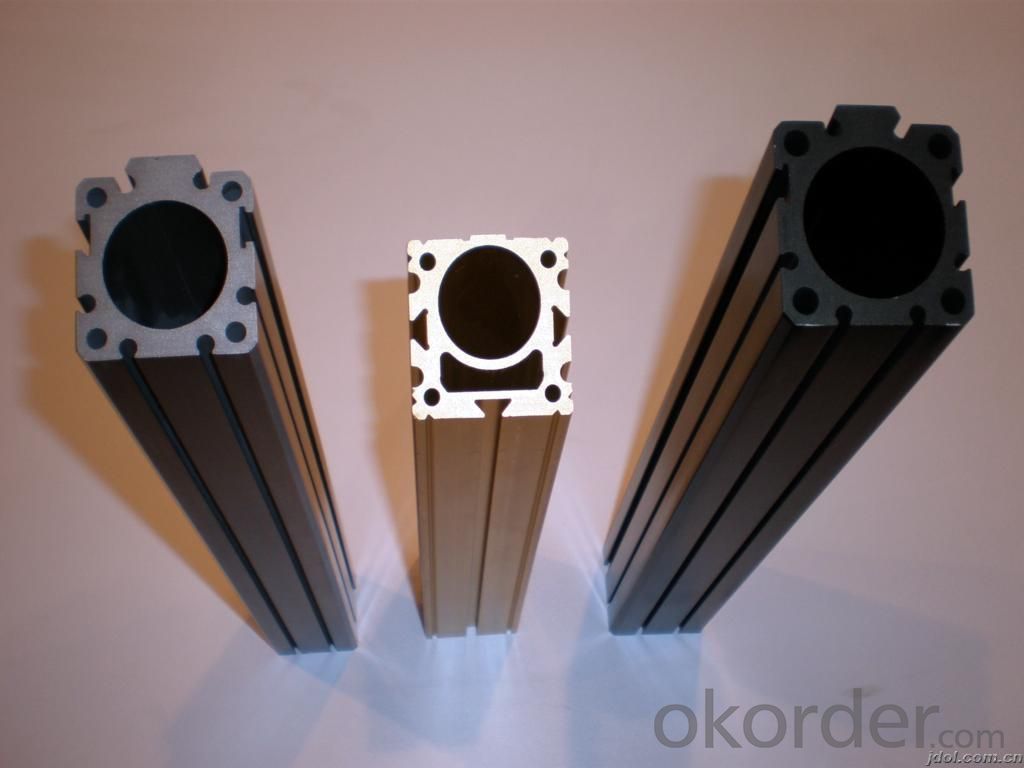
4.Aluminium Tile Trim Profile windows and Doors Construction Usage Specification:
1. Material: 6063,6061,6060,6005,6005A,etc.
2. Temper: T5 or T6
3. Finish: Mill finish, anodizing, powder coating, electrophoresis, wooden transfer or pvdf/carbon-flouride coated, polishing, brushing, sand blasting
4. Various colors: Silver, bronze, black, gold, blue, grey, champagne, bright, etc.
5. Machining: Cutting, punching, drilling, tapping, milling, bending, welding, CNC etc.
5.FAQ:
①How about your company?
A world class manufacturer & supplier of castings forging in carbon steel and alloy steel,is one of the large-scale professional investment casting production bases in China, consisting of both casting foundry forging and machining factory. Annually more than 8000 tons Precision casting and forging parts are exported to markets in Europe, America and Japan. OEM casting and forging service available according to customer’s requirements.
②How to guarantee the quality of the products?
We have established the international advanced quality management system,every link from raw material to final product we have strict quality test;We resolutely put an end to unqualified products flowing into the market. At the same time, we will provide necessary follow-up service assurance.
- Q: This question asks for methods to guarantee that the edges of installed aluminum sheets remain straight and smooth.
- <p>To ensure that the edges of aluminum sheets are straight and smooth after installation, follow these steps: 1. Use high-quality aluminum sheets that are free from warping or defects. 2. Measure and cut the sheets accurately to avoid any discrepancies. 3. Use a sharp, clean cutting tool to prevent jagged edges. 4. Smooth out any rough edges with a file or sandpaper. 5. Install the sheets with precision, ensuring they are aligned properly. 6. Use appropriate fasteners and brackets to secure the sheets without causing any distortion. 7. Regularly inspect and maintain the sheets to address any issues promptly. By following these steps, you can maintain the straightness and smoothness of aluminum sheet edges after installation.</p>
- Q: How is aluminum sheet made?
- Aluminum sheet is made through a process called rolling, which involves passing a preheated aluminum ingot through a series of rolling mills. The initial step is the heating of the ingot to a specific temperature to make it more malleable. Once heated, the ingot is then passed through a series of rolling mills, where it is continuously pressed and stretched to reduce its thickness and increase its length. The rolling mills consist of a pair of rotating cylinders with grooves on their surfaces. As the ingot passes through these cylinders, it is compressed and elongated, resulting in a thinner and longer sheet. The process is repeated multiple times, with each pass reducing the thickness of the sheet further. To maintain the desired thickness and dimensions, the sheet is periodically annealed, which involves heating it to a specific temperature and then slowly cooling it. This annealing process helps relieve internal stresses and ensures the sheet retains its desired properties. Once the desired thickness is achieved, the aluminum sheet is cooled, trimmed, and cut into specific lengths or rolled into coils for further processing or distribution. The final product is a flat, thin, and versatile sheet of aluminum that can be used in a wide range of applications, from construction and automotive industries to packaging and electrical appliances.
- Q: What are the weight and density of aluminum sheets?
- The weight and density of aluminum sheets depend on their thickness and dimensions. However, generally speaking, the density of aluminum is approximately 2.7 grams per cubic centimeter (g/cm³) or 2700 kilograms per cubic meter (kg/m³). As for the weight, it can be calculated by multiplying the density by the volume of the aluminum sheet. For example, if you have a sheet of aluminum that is 1 meter by 1 meter and 1 millimeter thick, the volume would be 0.001 cubic meters (1 meter x 1 meter x 0.001 meter). Multiplying this volume by the density of aluminum, you would find that the weight of the sheet is 2.7 kilograms (0.001 cubic meters x 2700 kg/m³). Remember that these values can vary depending on the exact dimensions and thickness of the aluminum sheet in question.
- Q: What are the different forming techniques for aluminum sheets?
- Some of the different forming techniques for aluminum sheets include bending, stretching, deep drawing, roll forming, and hydroforming.
- Q: Are aluminum sheets suitable for roofing systems?
- Yes, aluminum sheets are suitable for roofing systems. Aluminum is a popular choice for roofing due to its durability, lightweight nature, and resistance to corrosion. It is also fire resistant and can withstand extreme weather conditions such as high winds and heavy rain. Aluminum roofing sheets are long-lasting and require minimal maintenance, making them a cost-effective option in the long run. Additionally, aluminum is a highly reflective material, which can help in reducing energy costs by keeping buildings cooler in hot climates. Overall, aluminum sheets are a reliable and efficient choice for roofing systems.
- Q: Explain the similarities and differences in the properties of aluminum metal, Al(s) and aluminum oxide (a salt) Al203(s) in terms of the particles and forces present.. thanks doods!
- Aluminum metal is not found in nature, only aluminum oxide is in the mine or ground and they have to separate it from the oxidation to make a useful metal.
- Q: will it influence powder injection effect after wiping the oil contamination on the surface of aluminum sheet?
- It’s possible, there are several problems: 1, workers won’t wipe it thoroughly and fully, so you can wipe it after soaking. 2, the wiping efficiency is low, and we can use ultrasonic to clean it. 3, the water is poisonous and harmful to environment and workers’ health, so you can use water base to clean it, environmental and non-poisonous. Of course, if you really want to change, you can use detergent special for aluminum materials cleaning of our company, Changlvfeng chemical industry company. a, its PH value is 6.8-7.2 and it is totally an neutral liquid. b, good material applicability, detergent invented for aluminum materials. c, good degreasing ability, it has a good degreasing function for various oil contamination in processing and has no effect on material.
- Q: 5052 can aluminum plate be machined with laser cutting machine?
- Can cut, thickness less than 5, cutting edge without burr, not melt.
- Q: This question asks about the energy savings achieved by using aluminum sheets in comparison to other materials.
- <p>The energy savings achieved by using aluminum sheets instead of other materials can be significant. Aluminum is lightweight and has excellent thermal conductivity, which means it can reduce energy consumption in applications like building insulation and heat exchangers. For instance, aluminum-framed buildings can save up to 40% more energy than those made with traditional materials due to better insulation properties. Additionally, in industrial processes, aluminum's high thermal conductivity can lead to energy savings of around 33% compared to using copper in heat exchangers. The exact amount of energy saved depends on the specific application and the materials being replaced.</p>
- Q: Can aluminum sheets be used for decorative purposes?
- Yes, aluminum sheets can be used for decorative purposes. They are versatile and lightweight, making them ideal for various applications such as interior design, architectural accents, signage, and decorative panels. Aluminum sheets can be easily shaped, painted, or engraved, allowing for endless possibilities in creating beautiful and eye-catching decorative elements.
Send your message to us
Tlc Aluminum Sheets Si60 F254 for Aluminium Tile Trim Profile Windows and Doors Construction Usage
- Loading Port:
- Shanghai
- Payment Terms:
- TT OR LC
- Min Order Qty:
- 20 m.t.
- Supply Capability:
- 2000 m.t./month
OKorder Service Pledge
OKorder Financial Service
Similar products
Hot products
Hot Searches
Related keywords
